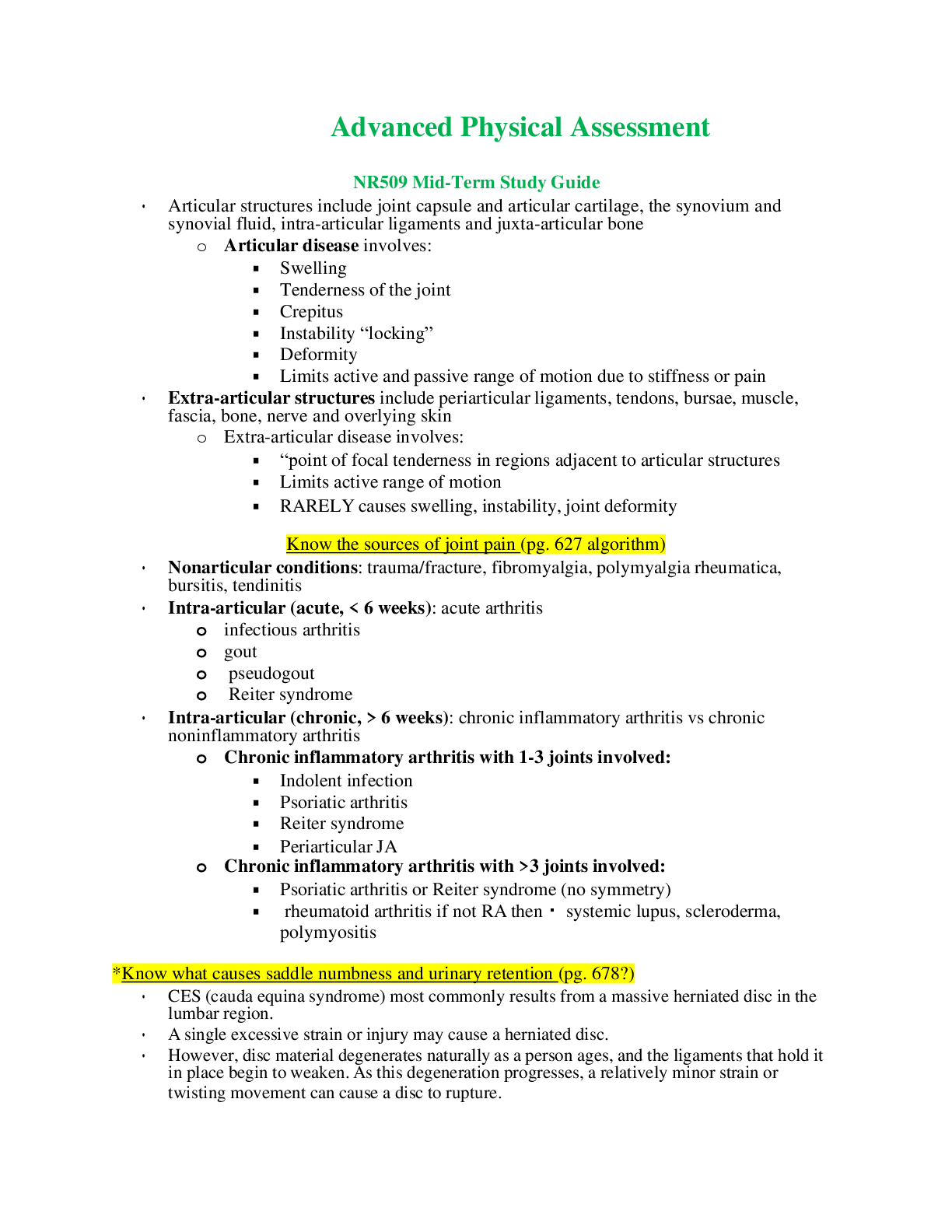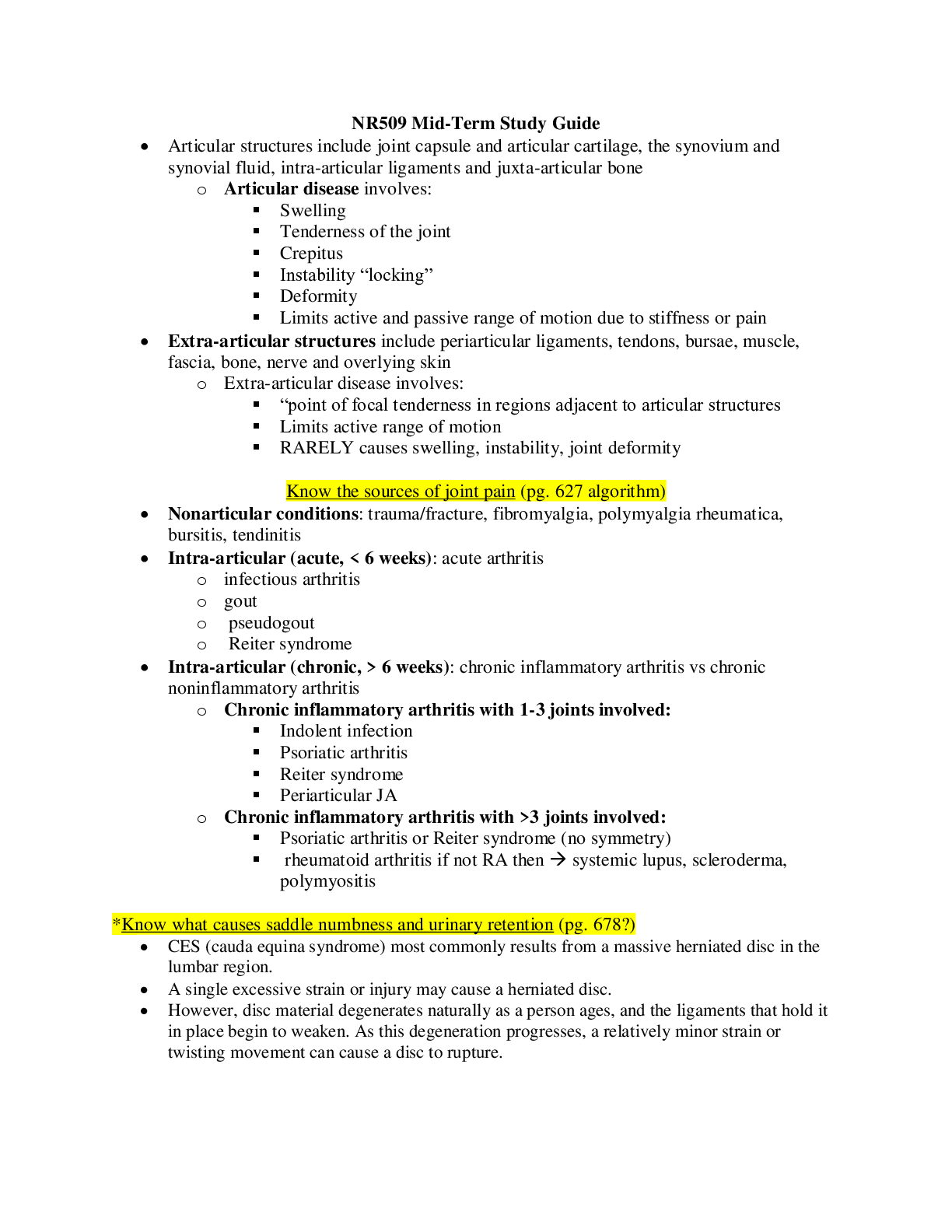*NURSING > STUDY GUIDE > New 2020. NR509 Mid-Term Study Guide Revised (All)
New 2020. NR509 Mid-Term Study Guide Revised
Document Content and Description Below
NR509 Mid-Term Study Guide • Articular structures include joint capsule and articular cartilage, the synovium and synovial fluid, intra-articular ligaments and juxta-articular bone o Articular di... sease involves: Swelling Tenderness of the joint Crepitus Instability “locking” Deformity Limits active and passive range of motion due to stiffness or pain • Extra-articular structures include periarticular ligaments, tendons, bursae, muscle, fascia, bone, nerve and overlying skin o Extra-articular disease involves: “point of focal tenderness in regions adjacent to articular structures Limits active range of motion RARELY causes swelling, instability, joint deformity Know the sources of joint pain (pg. 627 algorithm) • Nonarticular conditions: trauma/fracture, fibromyalgia, polymyalgia rheumatica, bursitis, tendinitis • Intra-articular (acute, < 6 weeks): acute arthritis o infectious arthritis o gout o pseudogout o Reiter syndrome • Intra-articular (chronic, > 6 weeks): chronic inflammatory arthritis vs chronic noninflammatory arthritis o Chronic inflammatory arthritis with 1-3 joints involved: Indolent infection Psoriatic arthritis Reiter syndrome Periarticular JA o Chronic inflammatory arthritis with >3 joints involved: Psoriatic arthritis or Reiter syndrome (no symmetry) rheumatoid arthritis if not RA then systemic lupus, scleroderma, polymyositis *Know what causes saddle numbness and urinary retention (pg. 678?) • CES (cauda equina syndrome) most commonly results from a massive herniated disc in the lumbar region. • A single excessive strain or injury may cause a herniated disc. • However, disc material degenerates naturally as a person ages, and the ligaments that hold it in place begin to weaken. As this degeneration progresses, a relatively minor strain or twisting movement can cause a disc to rupture. The following are other potential causes of CES: • Spinal lesions and tumors • Spinal infections or inflammation • Lumbar spinal stenosis • Violent injuries to the lower back (gunshots, falls, auto accidents) • Birth abnormalities • Spinal arteriovenous malformations (AVMs) • Spinal hemorrhages (subarachnoid, subdural, epidural) • Postoperative lumbar spine surgery complications • Spinal anesthesia [Show More]
Last updated: 2 years ago
Preview 1 out of 27 pages

Buy this document to get the full access instantly
Instant Download Access after purchase
Buy NowInstant download
We Accept:

Reviews( 0 )
$15.00
Can't find what you want? Try our AI powered Search
Document information
Connected school, study & course
About the document
Uploaded On
Nov 04, 2020
Number of pages
27
Written in
Additional information
This document has been written for:
Uploaded
Nov 04, 2020
Downloads
0
Views
75
















